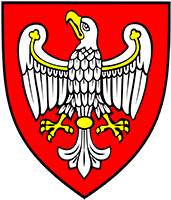Poland in the European Union and EU Funds 2014–2020
Since 2004, Poland has been a member of European Union, which entails numerous possibilities to obtain funds also by enterprises for their activities. The Self-government of the Wielkopolska Region which subsidises numerous projects having a positive influence on the economic development of the region under the Regional Operational Programme plays an essential role in funds distribution.
The Wielkopolska Regional Operational Programme for 2014–2020 is financed through two sources: European Regional Development Fund (ERDF) and European Social Fund (ESF). Financing from EU funds may be accompanied by financing from the state budget or regional self-government budget. The implementation of the programme will also involve the use of the funds contributed by entities implementing projects.
The share of individual sources of financing under the programme for the Wielkopolska Region is as follows:
- European Regional Development Fund: 61%
- European Social Fund: 24%
- State budget funds: 15%
The following operational programmes are available at national level:
- Infrastructure and Environment,
- Smart Growth,
- Knowledge, Education, Development,
- Digital Poland,
- Eastern Poland,
- Technical Assistance.
In addition, the Rural Development Programme (EUR 8.5 billion) and the Programme for Maritime and Fisheries are being implemented in Poland.
Institutions providing support within the EU funds
EU funds can be a significant support for entrepreneurs, which will make it easier to develop and achieve defined goals. The key is the ability to find through the various programs those most suitable that can be used while performing specific actions. For this purpose, the Information Points of the European Funds operating in Wielkopolska are very helpful and provide advice on the sources and programmes which may be used to support current actions and what one should pay attention to while preparing an application.
Loans, borrowings, leases — another source of funding
Loans and borrowings are popular instruments for financing ongoing operations of businesses. Although both formulas are similar, they differ, most of all, in terms of the source and legal form connected with the lending and servicing operations.
Loans, governed by the Banking Law, can be divided, among others, into:
- working capital facility—designed to finance the ongoing operations of a business,
- investment loan—lent to finance investment projects,
- mortgage loan—mostly used to finance the company’s operations, for example the purchase, renovation and modernisation of a building.
Borrowings, which are governed by the provisions of the Civil Code can have a revolving (supporting the ongoing business operations) and investment (aimed at the long-term development of a business) character. In Wielkopolska, the Wielkopolska Agency for Enterprise Development, is a very good source of lending loan and its financial instruments coming from the Agency’s own funds and the JEREMIE initiative of the European Commission have already supported many enterprises.
Leases are another form of support. In the case of leases, one party to the contract transfers to the other party the right to use a particular thing for a period of time agreed in the contract in exchange for the agreed leasing instalments. This formula is regulated by the Polish Civil Code. There are two basic types of leases: financial (capital) lease and operating (service) lease. A product of this type is commonly available in our region and offered by specialised companies and banks.
Public aid
The law on public aid lays down the rules of the state’s participation in the entrepreneurs’ operations. State aid may be provided to specific sectors, regions or economic entities as well as is connected with undertaking specific economic aims.
The most typical forms of public aid are:
- financial and in-kind grants, loans and borrowings (for example, lending loans with lower interests rates, where the difference is covered by state funds),
- guarantees and sureties given by State Treasury with budget effects,
- tax preferences (tax exemptions and reliefs, tax rate reductions, deferment of the payment term or remittance),
- equity instruments (for example, acquisition of shares in the enterprise capital using state funds),
- decreasing of fees on account of environment protection or public procurements receivables, etc.
Member states of the EU can provide such kind of public aid to the regions where the standard of living is abnormally low or where there is serious underemployment. The amount is determined based on the regional aid map which has been created for all regions of the European Union. The entire territory of Poland is eligible for regional aid, but the intensity of the aid varies depending on the region of the country. The maximum level of regional public aid calculated as the ratio of regional aid value expressed as the gross grant equivalent to the eligible costs attracting assistance amounts to 25% in Wielkopolska. The maximum intensity of the regional aid provided to small and medium-sized businesses (excluding new investments with eligible costs exceeding EUR 50 millions) is increased by 20% percentage points gross for small enterprises and 6 percentage points gross for medium-sized enterprises in relation to the maximum intensity of public aid for the voivodeship.
